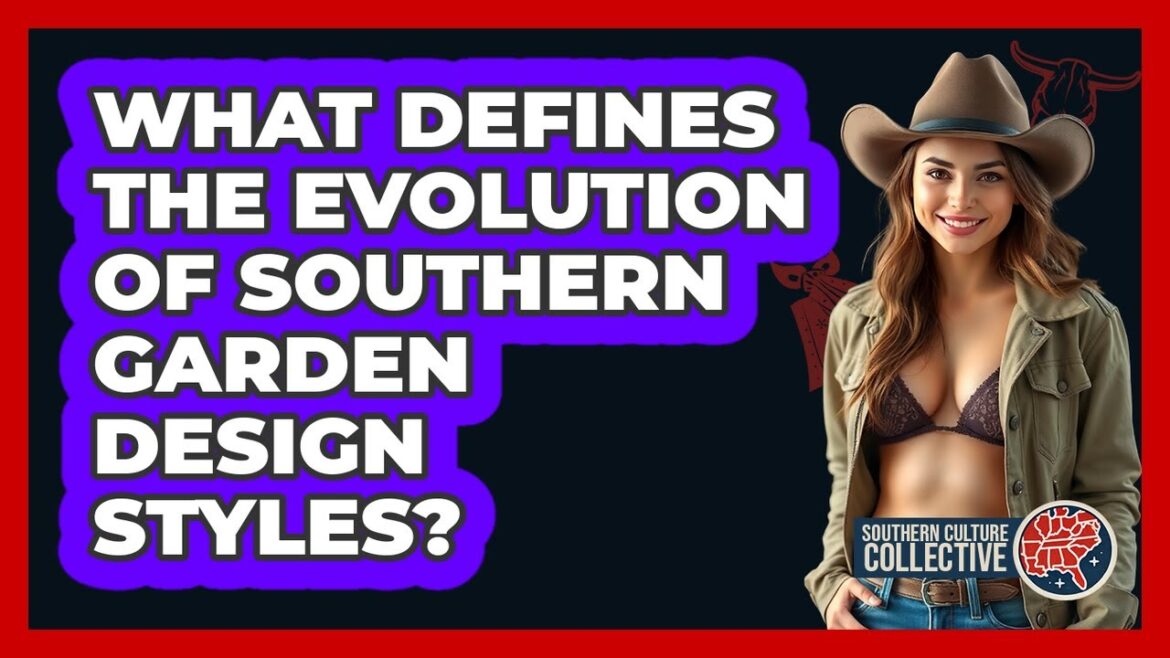What Defines The Evolution Of Southern Garden Design Styles? Have you ever wondered how garden styles in the Southern United States have evolved over time? In this engaging video, we’ll explore the history and development of Southern garden design, highlighting key influences and trends that have shaped these outdoor spaces. We’ll start by looking at how early gardens were simple and functional, mainly used for growing food and herbs near homes. Then, we’ll discuss how European traditions introduced more structured layouts, with geometric patterns and ornamental features. You’ll learn about the mid-1800s shift toward more natural-looking landscapes and the influence of landscape designers like Andrew Jackson Downing. The video also covers the Colonial Revival movement, which emphasized symmetry, traditional plantings, and a romantic sense of heritage. Moving into the twentieth century, we’ll see how garden styles continued to adapt with new plants, outdoor living spaces, and preservation efforts to maintain historic gardens. Today, Southern garden design blends historic elements with modern practices, using native plants and traditional structures to create meaningful, beautiful outdoor environments. Whether you’re a gardening enthusiast or interested in Southern history, this video offers a comprehensive look at how these gardens reflect the land, culture, and evolving tastes of the region. Join us and subscribe for more insights into Southern history and garden design.
⬇️ Subscribe to our channel for more valuable insights.
🔗Subscribe: https://www.youtube.com/@SouthernCultureCollective/?sub_confirmation=1
#SouthernGardens #GardenHistory #SouthernUnitedStates #LandscapeDesign #HistoricGardens #GardenStyles #SouthernCulture #OutdoorLiving #GardenDesign #PlantHistory #LandscapeArchitecture #HeritageGardens #NativePlants #GardenEvolution #SouthernHistory
About Us: Welcome to Southern Culture Collective, your ultimate destination for exploring the rich tapestry of Southern life. Join us as we delve into the heart of Southern heritage, from delicious cuisine and traditional music to captivating stories and regional customs. Our channel celebrates the unique charm and diverse narratives that define the South, offering a blend of history, culture, and lifestyle that will inspire and engage viewers.
[Music] What defines the evolution of southern garden design styles? Imagine walking through a garden that tells a story of history, culture, and climate all at once. That’s what southern garden design is all about. It has grown and changed over centuries, shaped by the land, and the people who lived here. In the early 1800s, gardens in the south were simple and practical. They were small patches near homes, mainly for growing vegetables, herbs, and fruit trees to feed families. These gardens were often enclosed with wooden fences to keep out animals, and they had a relaxed, informal look. Houses were usually on hilltops, giving views of the surrounding land and making the garden part of the natural scenery. As the south became more settled, garden styles started to borrow from European traditions. French, English, and Dutch influences brought more structure and order. Gardens featured rectangular beds, geometric layouts, and a mix of flowers and vegetables. Raised beds and gravel paths became common, making the garden easier to maintain. But even with these formal touches, many gardens still had a casual feel with plants arranged in a less strict way. Midway through the 19th century, landscape designers like Andrew Jackson Downing changed the game. They promoted a more natural look with gardens blending into the landscape rather than standing out. Wealthy estates began to include ornamental features like flower beds, boxwood hedges, and charming structures such as arches and picket fences. These gardens balanced beauty with function, creating outdoor spaces perfect for relaxing or entertaining. Later, the colonial revival movement gained popularity. It looked back to America’s colonial roots, emphasizing symmetry and traditional plantings. Old roses, lilacs, holly hawks, and classic garden accessories like sundales became common. These gardens often looked more decorative and lush, reflecting southern pride and a romantic view of history. They were designed to show off social status and a sense of heritage. Throughout the 20th century, garden styles kept evolving. New plants and outdoor living ideas appeared, like large perennial beds and patios for gatherings. Many southern garden clubs and preservation groups work to keep historic gardens alive, ensuring traditional elements stayed part of the landscape. Today, southern garden design combines old and new, using native plants suited to the warm climate and traditional structures that honor the past. It’s about creating spaces that are both beautiful and meaningful, rooted in history, but ready for modern life. [Music]


Comments are closed.